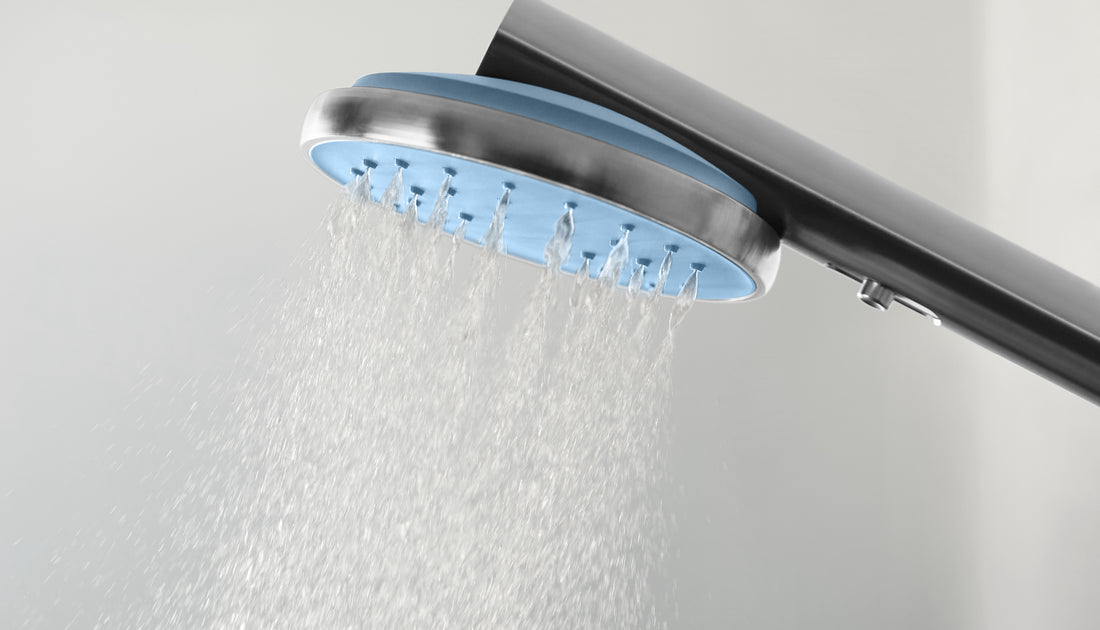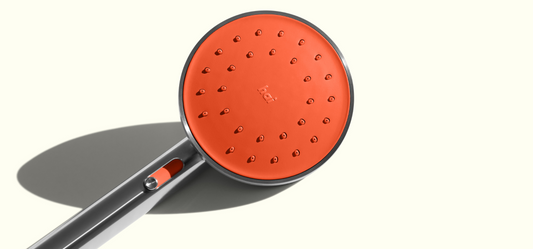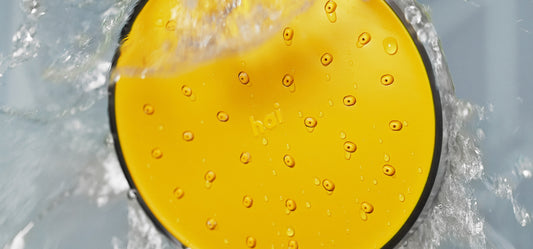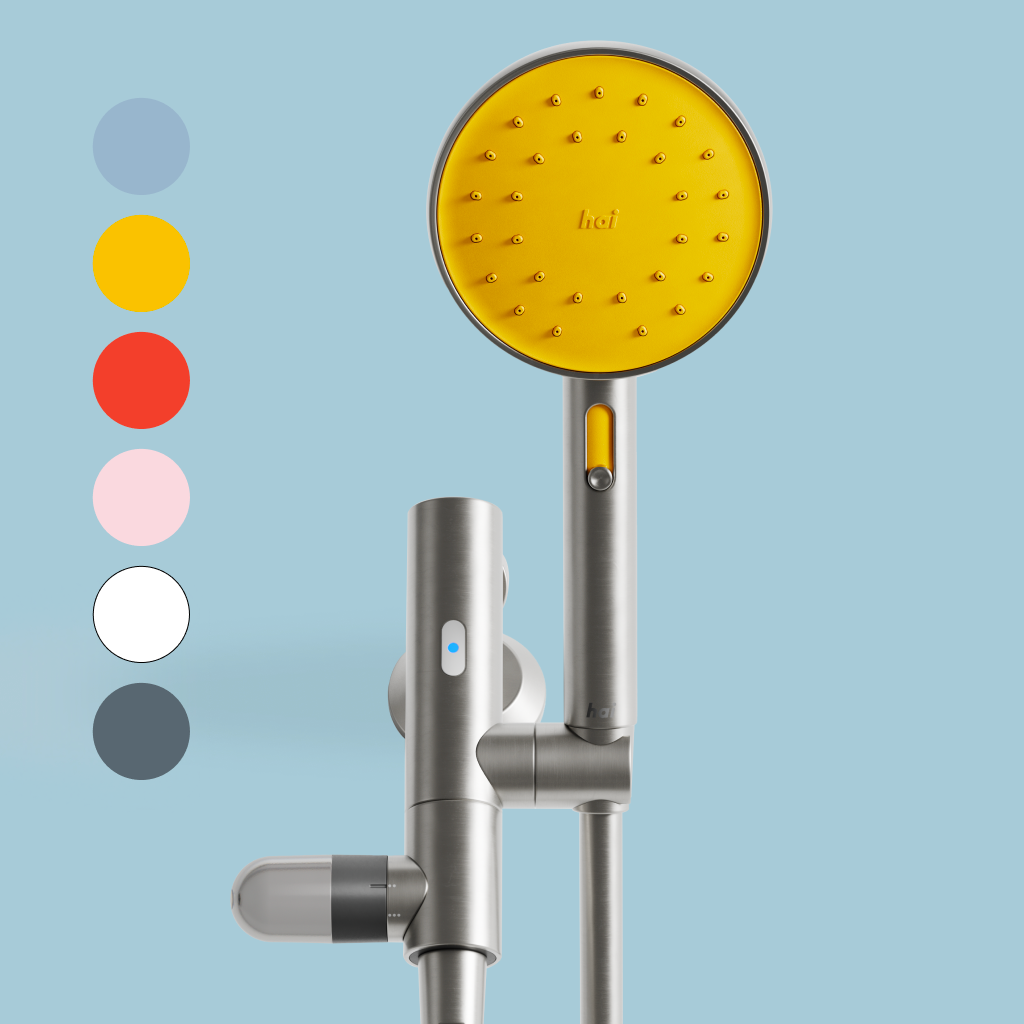Shower Head GPM: What It Is and What You Need to Know
There's nothing quite like stepping into a shower with a perfect flow. The feeling of that steady stream of warm water is refreshing and revitalizing, leaving you feeling clean and invigorated.
But have you ever stopped to think about what makes that feeling possible?
The answer is, in part, gallons per minute (GPM). GPM, also known as flow rate, is the measurement of how many gallons of water pour out of your shower head each minute. It's an important factor to consider when choosing a shower head for your home — and the planet. Here are the key things you need to know about GPM.
1. Why should you care about GPM?
Turns out your shower head's GPM is super important. In fact, it's the law! U.S. government regulations limit the maximum flow rate of shower heads to 2.5 GPM as a measure to save water. Some places that experience droughts and water shortages have even tighter restrictions. (We'll talk more about these later.)
GPM is an important metric to consider if you're striving for a more planet-friendly lifestyle. Showering is one of the most water-intensive activities we do at home, so paying attention to shower head flow rates can have a big impact on your water bill and your carbon footprint. A low-flow shower head with a GPM of 2.0 or less can save the average family 2,700 gallons per year, according to the Environmental Protection Agency (EPA). That's a lot of water savings.
More shower facts from the EPA
- Every year, showers in the U.S. use almost 1.2 trillion gallons of water.
- The average family uses 40 gallons of water per day just for showering.
- Showering accounts for almost 17% of residential indoor water usage.
 2. What is WaterSense and what does it have to do with shower head flow rate?
2. What is WaterSense and what does it have to do with shower head flow rate?
The term "WaterSense" might be new to you, but it's been around for a while. In 1992, the EPA created the voluntary WaterSense program as a way to encourage people and businesses to save water. The program's label is now synonymous with efficiency, and you'll find it on everything from toilets to faucets to shower heads.
A WaterSense labeled product must undergo rigorous testing to ensure they meet certain criteria. One of those criteria is flow rate. Shower heads must have a maximum flow rate of 2.0 GPM or lower. WaterSense also sets performance standards. The label is only given to products that have been independently verified to use 20% less water than similar products — without sacrificing quality.
3. What are some state and local government limits on GPM?
While a 2.5 GPM shower head is allowed by federal law, some states have gone even further to curb residential indoor water use.
- New York, Massachusetts, Colorado, Maine, and Vermont require new shower heads to have a maximum GPM of 2.0. Rhode Island will be joining that list in 2023.
- California, Washington, Oregon, and Hawaii set their max at 1.8 GPM for modern shower heads.
Find out more about your state’s maximum water flow rate allowance here.
Local governments are also getting in on the action. Sometimes, their regulations are even stricter than state and national rules. For example, in West Hollywood, California, all shower heads are required to have a maximum flow rate of 1.5 GPM and carry the WaterSense label.
Some communities also offer incentives and rebates to residents who voluntarily install low-flow shower heads. These are usually offered through local utility companies, so check with your water provider about their incentive programs.

4. What's the difference between flow rate and water pressure?
While flow rate measures how many gallons of water flow out of your shower head per minute, water pressure is the force with which that water comes out. The two terms are often confused, but they're actually pretty different.
Water pressure is determined by your home's plumbing and municipal water supply. In general, most U.S. homes have a water pressure of 40 to 80 PSI (pounds per square inch). If you live in an older home, your water pressure might be lower. You can test your home's water pressure with a pressure gauge, which you can attach to an outdoor faucet or your kitchen sink.
5. Can a low-flow shower head provide higher pressure?
If your home has low water pressure, you might be wondering if a low-flow shower head can help. The answer is maybe. The right shower head can make it feel like the water is coming out with more force.
Try a shower head with multiple spray patterns. Certain settings may direct the water in a way that gives you the experience of a high-pressure shower head, even with a low flow rate. You might also want to look for a shower head with an easy-to-clean nozzle. Mineral buildup can cause your shower head's holes to become clogged and get in the way of water flowing.
6. How do you figure out your shower’s GPM?
If you’re shopping for a new shower head, it’s a great idea to test your shower’s GPM before you swap out your old shower head model. It’ll narrow down the best options for you.
The bucket test is the easiest way to measure flow rate. Before you start, turn off every faucet and every appliance that uses running water. This will help you get an accurate read. Next, grab a one-gallon bucket and a stopwatch. With your water on full blast, fill the bucket, timing how long it takes. Your shower’s GPM will be 1 gallon divided by that time, converted to minutes.
Tip: If you live in a multi-level house, test your flow rate in a bathroom on the lowest floor so that you’re closer to your water supply.

7. Can low-flow shower heads still deliver a great shower experience?
Absolutely. Many low-flow shower heads still deliver a powerful, satisfying shower even with a reduced flow rate.
If you're looking for a better showering experience that also helps you save water, we recommend checking out the 1.8-GPM shower head model from hai. This WaterSense-certified shower head has multiple spray patterns and easy installation, these shower heads are designed to deliver an amazing experience while helping you conserve water. Plus, they come in a variety of fun colors!
Just like hai's standard shower head, which has a 2.5-GPM flow rate, the low-flow model offers fantastic coverage that beats the average water stream from other shower heads on the market. You'll get a spa-quality shower every time.
hai is a smart shower head designed to help you improve your eco performance. So, if you're looking to save even more water and energy, it's a great choice. You can set water-saving goals and track how much water you use over time in the hai app. hai shower heads are Bluetooth-enabled, and send your water use data straight to your phone.
Here are a few other features that make hai a great choice if you're looking for a low-flow shower head:
- Easy installation. You don't need any tools or plumbers to install a hai shower head.
- The customizable hai LED light lets you know when the water is warm enough to get in and when you’re about to meet the time limit goal you set for yourself.
- A handheld control slider makes it easy to customize your shower spray — from a steady stream to gentle spa mists.
- Choose from six fun colors: moon, charcoal, rose quartz, persimmon, citron, surf.
- hai is engineered using premium stainless steel and smart design choices, like the grooveless PVC hose that won't harbor bacteria.
Now that you know more about GPM, it’s time to take the next step in creating your perfect showering experience. Today is a great day to get hai.











